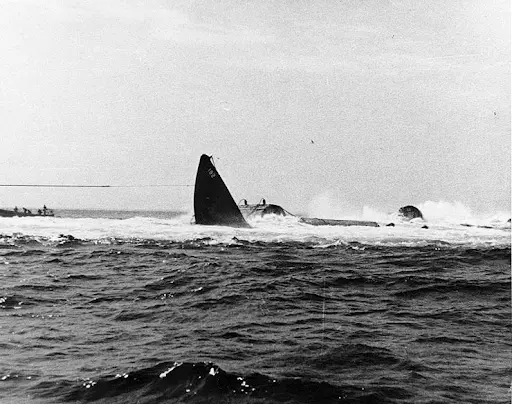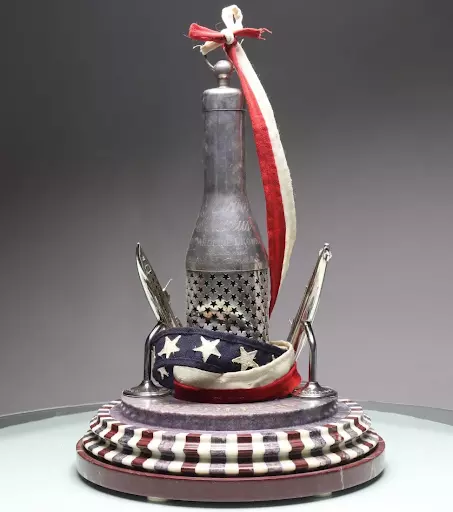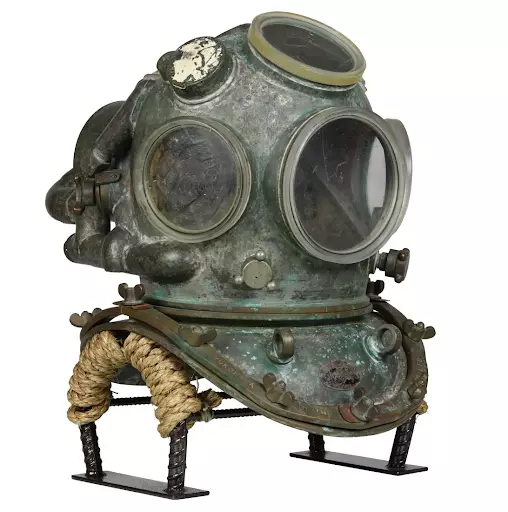Nation’s Attic Resurfaces Treasures From the Greatest Naval Rescue Operation in History

On May 23, 1939, the ill-fated USS Squalus sunk 240 feet below water following an engine failure. Despite the limited technology and diving techniques of the period, a rescue team succeeded in saving most of the crew. It was an unprecedented feat that changed the course of naval rescue operations. Over 400 pieces of memorabilia from the salvage and other diving equipment are available in Nation’s Attic’s first sale of 2022, the Submarine & Underwater Armor Auction.
The diesel-electric USS Squalus submarine was built at the Portsmouth Navy Yard in New Hampshire and christened on September 14, 1938. One of the oldest traditions during the christening ceremony of new ships and submarines was breaking a bottle of champagne over its bow. The bottle was inside a cage for safety. The original and the only silver christening bottle cage used to launch the USS Squalus highlights the upcoming sale. It has an estimate of USD 5,000 to $25,000.

Not long after the submarine slipped under the surface of the Atlantic Ocean during one of its routine sea trials, the main engine induction valve failed. Water gushed into the aft engine valve in a few minutes, flooding the inside. The 310-foot long watercraft and 59 crew members on board sunk to the ocean bed.
Salvaging the USS Squalus was the beginning of a new chapter in the history of underwater rescue. Previous rescue operations beyond 20 feet did not reap much success, so a rescue operation at 240 feet seemed almost impossible— until it wasn’t. After a complex rescue, the submarine and 33 surviving members were brought to the shore.

The second half of the sale is dedicated to various diving helmets. An uncommon-looking diving helmet made by the Yokohama Company in Japan is available.
The Yokohama helium diving helmet (estimated at $6,500 to $9,500) features several functional components that contribute to its unique design. The back of the helmet incorporates a compartment for a canister of CO2 absorbents and other plumbing. These fittings make the helmet suitable for use in extreme deep diving jobs undertaken in hazardous conditions.

An underwater camera housing attributed to launching the careers of many underwater photographers in the 1950s is another key lot. The Hans Hass Rolleimarin System was produced and sold in a limited quantity of 3,500 worldwide. One of this series’ earlier fully functional models is available for sale at the event. It has an estimate of $750 to $1,500.
Components from the submarine, documents, photos, battle flags, diving helmets and watches, and other nautical lots are also a part of the sale presented by Nation’s Attic on April 2, 2022. Visit LiveAuctioneers for the complete catalog and to place a bid.
In a previous Nation’s Attic event, vintage diving helmets such as the notorious Mark V “Widow Maker” crossed the block. Read Auction Daily’s coverage for more details.











